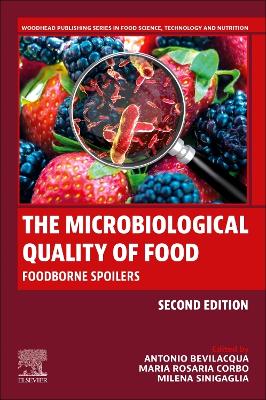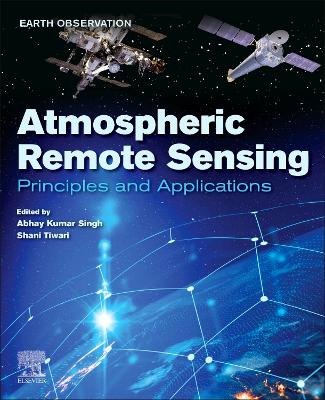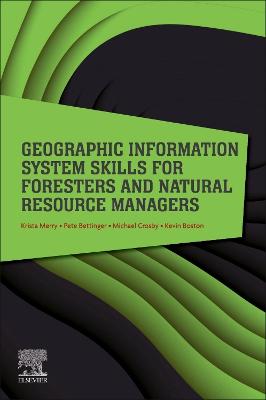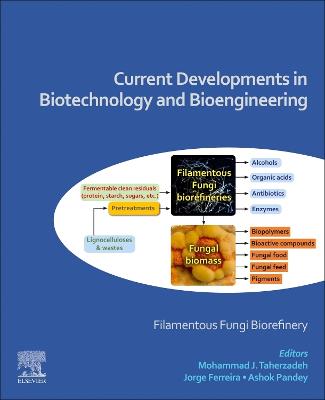Hyperspectral Imaging
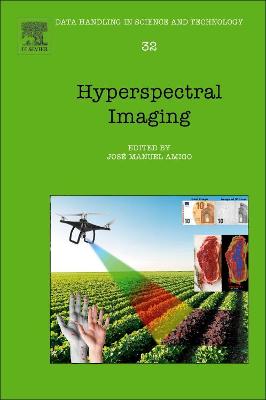 -10%
portes grátis
-10%
portes grátis
Hyperspectral Imaging
Amigo, Jose Manuel
Elsevier Science & Technology
10/2019
800
Mole
Inglês
9780444639776
15 a 20 dias
3100
Descrição não disponível.
1. INTRODUCTION 1.1. Hyperspectral Images. From Remote sensing to bench top instruments. A general overview 1.2. Hyperspectral cameras. Types of hyperspectral cameras, radiations and sensors
2. ALGORITHMS AND METHODS 2.1. Pre-processing of hyperspectral images. Spatial and spectral issues 2.2. Hyperspectral data compression 2.3. Pansharpening 2.4. Unsupervised pattern recognition methods 2.5. Multivariate Curve Resolution 2.6. Non Linear Spectral un-mixing 2.7. Variability of the endmembers in spectral unmixing 2.8. Regression models 2.9. Classical Least Squares for Detection and Classification 2.10. Supervised Classification Methods in Hyperspectral Imaging - Recent Advances 2.11. Fusion of Hyperspectral Imaging and LiDAR for Forest Monitoring 2.12. Hyperspectral time series analysis: Hyperspectral image data streams interpreted by modeling known and unknown variations 2.13. Statistical Biophysical Parameter Retrieval and Emulation with Gaussian Processes
3. APPLICATION FIELDS 3.1. Hyperspectral cameras adapted to the applications. How and when 3.2. Applications in Remote Sensing - Natural Landscapes 3.3. Applications in Remote Sensing - Anthropogenic activities 3.4. Vegetation and crops 3.5. Food and feed production 3.6. Hyperspectral Imaging for Food related Microbiology Applications 3.7. Hyperspectral Imaging in Medical Applications 3.8. Hyperspectral Imaging as a part of Pharmaceutical Product Design 3.9. Hyperspectral imaging for artworks investigation 3.10. Growing applications of hyperspectral and multispectral imaging
2. ALGORITHMS AND METHODS 2.1. Pre-processing of hyperspectral images. Spatial and spectral issues 2.2. Hyperspectral data compression 2.3. Pansharpening 2.4. Unsupervised pattern recognition methods 2.5. Multivariate Curve Resolution 2.6. Non Linear Spectral un-mixing 2.7. Variability of the endmembers in spectral unmixing 2.8. Regression models 2.9. Classical Least Squares for Detection and Classification 2.10. Supervised Classification Methods in Hyperspectral Imaging - Recent Advances 2.11. Fusion of Hyperspectral Imaging and LiDAR for Forest Monitoring 2.12. Hyperspectral time series analysis: Hyperspectral image data streams interpreted by modeling known and unknown variations 2.13. Statistical Biophysical Parameter Retrieval and Emulation with Gaussian Processes
3. APPLICATION FIELDS 3.1. Hyperspectral cameras adapted to the applications. How and when 3.2. Applications in Remote Sensing - Natural Landscapes 3.3. Applications in Remote Sensing - Anthropogenic activities 3.4. Vegetation and crops 3.5. Food and feed production 3.6. Hyperspectral Imaging for Food related Microbiology Applications 3.7. Hyperspectral Imaging in Medical Applications 3.8. Hyperspectral Imaging as a part of Pharmaceutical Product Design 3.9. Hyperspectral imaging for artworks investigation 3.10. Growing applications of hyperspectral and multispectral imaging
Este título pertence ao(s) assunto(s) indicados(s). Para ver outros títulos clique no assunto desejado.
Abundance fractions; Acousto-optic tuneable filters; Agricultural ecosystems; ANN; Archaeology; Artist materials; Artworks investigations; Attribute profiles; Bauxaline; Bayesian Inference; Calibration; Cancer detection and diagnosis; Chemical imaging; Chemometrics; Classical least squares; Classification; Clusters; Coherent anti-stokes Raman scattering; Component substitution techniques; Computer vision; Configuration; Coral reef monitoring; Cultural heritage; Data fusion assessment protocols; Data fusion; Data mining; Dendrograms; Detector; Diachronic analysis; Drying; DSM data; Earth observation; Earth Observing System; Edge-preserving filtering; EMSC; Emulation; Endmember variability; Ensemble classifiers; Entomology; Entropy encoding; Escherichia coli; Extended least squares; Field programmable gate arrays; Food; Forensics; Fractional vegetation cover; Fuzzy clustering; Gaussian process; Generalized least squares; Heavy metal pollution;
1. INTRODUCTION 1.1. Hyperspectral Images. From Remote sensing to bench top instruments. A general overview 1.2. Hyperspectral cameras. Types of hyperspectral cameras, radiations and sensors
2. ALGORITHMS AND METHODS 2.1. Pre-processing of hyperspectral images. Spatial and spectral issues 2.2. Hyperspectral data compression 2.3. Pansharpening 2.4. Unsupervised pattern recognition methods 2.5. Multivariate Curve Resolution 2.6. Non Linear Spectral un-mixing 2.7. Variability of the endmembers in spectral unmixing 2.8. Regression models 2.9. Classical Least Squares for Detection and Classification 2.10. Supervised Classification Methods in Hyperspectral Imaging - Recent Advances 2.11. Fusion of Hyperspectral Imaging and LiDAR for Forest Monitoring 2.12. Hyperspectral time series analysis: Hyperspectral image data streams interpreted by modeling known and unknown variations 2.13. Statistical Biophysical Parameter Retrieval and Emulation with Gaussian Processes
3. APPLICATION FIELDS 3.1. Hyperspectral cameras adapted to the applications. How and when 3.2. Applications in Remote Sensing - Natural Landscapes 3.3. Applications in Remote Sensing - Anthropogenic activities 3.4. Vegetation and crops 3.5. Food and feed production 3.6. Hyperspectral Imaging for Food related Microbiology Applications 3.7. Hyperspectral Imaging in Medical Applications 3.8. Hyperspectral Imaging as a part of Pharmaceutical Product Design 3.9. Hyperspectral imaging for artworks investigation 3.10. Growing applications of hyperspectral and multispectral imaging
2. ALGORITHMS AND METHODS 2.1. Pre-processing of hyperspectral images. Spatial and spectral issues 2.2. Hyperspectral data compression 2.3. Pansharpening 2.4. Unsupervised pattern recognition methods 2.5. Multivariate Curve Resolution 2.6. Non Linear Spectral un-mixing 2.7. Variability of the endmembers in spectral unmixing 2.8. Regression models 2.9. Classical Least Squares for Detection and Classification 2.10. Supervised Classification Methods in Hyperspectral Imaging - Recent Advances 2.11. Fusion of Hyperspectral Imaging and LiDAR for Forest Monitoring 2.12. Hyperspectral time series analysis: Hyperspectral image data streams interpreted by modeling known and unknown variations 2.13. Statistical Biophysical Parameter Retrieval and Emulation with Gaussian Processes
3. APPLICATION FIELDS 3.1. Hyperspectral cameras adapted to the applications. How and when 3.2. Applications in Remote Sensing - Natural Landscapes 3.3. Applications in Remote Sensing - Anthropogenic activities 3.4. Vegetation and crops 3.5. Food and feed production 3.6. Hyperspectral Imaging for Food related Microbiology Applications 3.7. Hyperspectral Imaging in Medical Applications 3.8. Hyperspectral Imaging as a part of Pharmaceutical Product Design 3.9. Hyperspectral imaging for artworks investigation 3.10. Growing applications of hyperspectral and multispectral imaging
Este título pertence ao(s) assunto(s) indicados(s). Para ver outros títulos clique no assunto desejado.
Abundance fractions; Acousto-optic tuneable filters; Agricultural ecosystems; ANN; Archaeology; Artist materials; Artworks investigations; Attribute profiles; Bauxaline; Bayesian Inference; Calibration; Cancer detection and diagnosis; Chemical imaging; Chemometrics; Classical least squares; Classification; Clusters; Coherent anti-stokes Raman scattering; Component substitution techniques; Computer vision; Configuration; Coral reef monitoring; Cultural heritage; Data fusion assessment protocols; Data fusion; Data mining; Dendrograms; Detector; Diachronic analysis; Drying; DSM data; Earth observation; Earth Observing System; Edge-preserving filtering; EMSC; Emulation; Endmember variability; Ensemble classifiers; Entomology; Entropy encoding; Escherichia coli; Extended least squares; Field programmable gate arrays; Food; Forensics; Fractional vegetation cover; Fuzzy clustering; Gaussian process; Generalized least squares; Heavy metal pollution;



